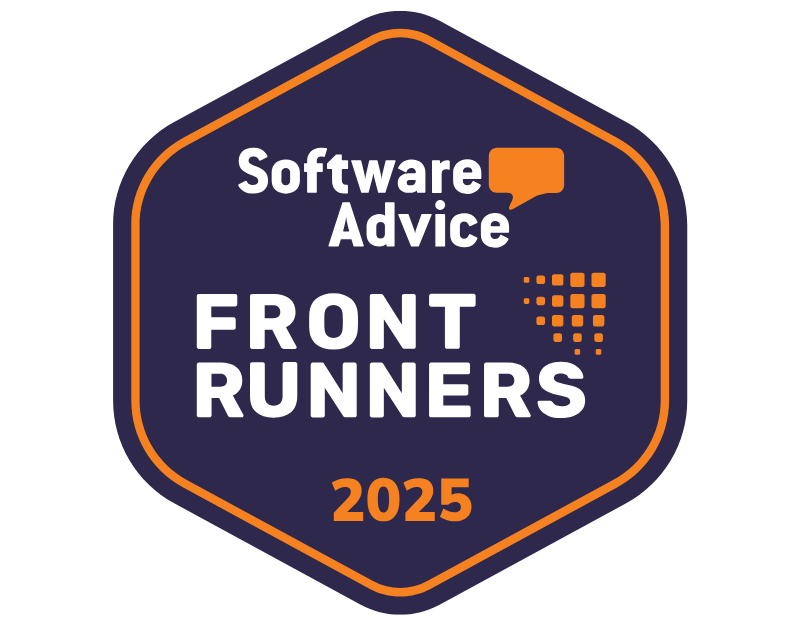Cash is, and always has been, more than just king, it’s the heartbeat of every growing business. Without solid cash management strategies, even profitable companies can face insolvency. Whether you’re scaling operations, expanding into new markets, or investing in innovation, having a firm grip on your cash flow determines whether your company thrives or stalls.
This article breaks down why cash flow management strategies matter, which techniques are most effective, and how forward-thinking CFOs are securing their companies’ financial futures with smart planning, and the right tools.
Key Takeaways
- Cash management strategies provide the financial visibility and control essential for sustainable growth.
- Effective cash flow management strategies prevent disruptions, improve forecasting, and reduce dependency on credit.
- By applying proven techniques for effective cash flow management, CFOs can make strategic investments with confidence.
- Software accounts receivable software solutions enhance cash visibility and forecasting accuracy, helping companies stay agile and scalable.
Importance of Cash Management Strategies
Cash management strategies aren’t just a finance team’s concern, they’re a company-wide necessity. According to industry experts, poor cash management remains one of the top reasons startups and small businesses fail to survive beyond the five-year mark.
At its core, cash management involves tracking, analyzing, and optimizing the cash inflows and outflows of a business. The goal? Ensuring you have the right amount of liquidity at the right time to meet obligations, invest in growth, and navigate unexpected challenges.
Strategic cash management helps you:
- Predict liquidity needs with accuracy.
- Avoid overdrafts, late fees, or missed opportunities.
- Improve relationships with vendors through timely payments.
- Maximize investment potential by avoiding idle cash.
When cash is mismanaged, growth becomes riskier, cash crunches more frequent, and financial planning reactive rather than proactive.
It should be noted that a smaller company with limited cash reserves can be more stable and outlast a cash-rich competitor by mastering cash management strategies. For example, a boutique software firm with tight budgeting and real-time cash forecasting might continue to grow steadily during an economic downturn, while a larger competitor, flush with capital but plagued by poor receivables collection and bloated expenses, struggles to maintain solvency.
Take a small SaaS startup that automates its invoicing, maintains a rolling 12-month forecast, and negotiates flexible vendor terms. Though it operates on modest revenue, its cash is always working: invested in customer acquisition, R&D, and timely payroll. In contrast, a larger enterprise might misallocate cash into non-strategic assets, face mounting AR delays, and burn through reserves due to lack of visibility.
This example underscores that success isn’t about how much cash you have, it’s how well you manage it.
How Effective Cash Flow Management Strategies Support Growth
Effective cash flow management strategies do more than maintain financial health, they drive growth. By forecasting incoming and outgoing cash, businesses can:
- Strategically time major expenditures such as inventory purchases, new hires, or capital investments.
- Negotiate better vendor terms, leveraging strong cash flow as a bargaining chip.
- Expand with confidence, knowing there’s sufficient cash to support operations.
- Negotiate better and more favorable loan terms, supported by strong financials and predictive cash flow data.
- Improve creditworthiness and investor confidence by demonstrating consistent liquidity and financial control.
- Reduce reliance on emergency financing, avoiding unfavorable high-interest borrowing during shortfalls.
- Enable timely entry into new markets or product launches with precise funding allocation.
- Strengthen internal decision-making by aligning cash flow data with operational and strategic priorities.
Growth often comes with increased operational complexity. As revenues scale, so do costs. Without proper cash visibility, companies can quickly find themselves overextended. This is where cash flow forecasting becomes invaluable. By anticipating future cash positions, CFOs can plan for both expected needs (like payroll) and strategic opportunities (like M&A or product launches).
When creating a strategy, consider if short vs. long term cash flow forecasting is more appropriate for the situation at hand.
Take Control of Your Cash Flow Today
Cash management doesn’t have to be complex. Learn how growing businesses like yours streamline collections and reduce DSO with Gaviti’s A/R automation platform.
Watch the Product Demo To Learn MoreShort-term forecasting provides granular visibility into near-term cash inflows and outflows, often daily or weekly, helping ensure that the business can meet immediate obligations such as payroll, rent, and supplier payments. This level of precision supports smoother operations and minimizes the risk of overdrafts or missed payments.
On the other hand, long-term forecasting extends the view beyond the immediate horizon, often spanning 12 months or more. It empowers CFOs to anticipate the financial impact of strategic initiatives such as expansion, mergers, or major capital investments. By using both forecasting horizons in tandem, companies can detect potential liquidity gaps early and create contingency plans before issues escalate.
Together, short- and long-term forecasts act as a dual-lens framework: the short term protects cash stability while the long term ensures strategic sustainability. This comprehensive forecasting approach is critical for scaling businesses that must remain agile in day-to-day operations while positioning themselves for future growth
Essential Techniques for Effective Cash Flow Management
There is no one-size-fits-all approach to managing cash effectively. Generally, some key techniques for effective cash flow management consistently deliver value across industries:
1. Daily Cash Monitoring
Tracking your cash position daily ensures you always know what’s available to spend, and what’s not. This practice helps identify discrepancies early and allows for swift corrective action.
2. Customer Payment Acceleration
Optimize accounts receivable by:
- Sending automated reminders.
- Offering early payment discounts.
- Enforcing stricter payment terms.
This ensures your cash inflow stays consistent and predictable.
3. Vendor Payment Optimization
Manage accounts payable by:
- Negotiating favorable payment terms.
- Taking advantage of discounts when cash allows.
- Avoiding early payments unless financially beneficial.
This ensures you hold onto cash longer while maintaining strong supplier relationships.
4. Rolling Forecasts
Using a rolling forecast model helps businesses adjust projections continuously based on new data. Learn more about Advantages and best practices of forecasting cash flows to refine your forecasting model over time.
5. Cash Flow Buffers
Maintain a buffer, typically one to three months of expenses, in a reserve account. This protects your business during periods of low cash inflow or economic uncertainty.
6. Scenario Planning
Plan for best-case, worst-case, and most-likely outcomes. This helps identify potential cash flow shortfalls before they become real threats.
By combining these methods, companies gain a 360° view of their financial health and increase their ability to make bold yet calculated decisions.
Developing a Solid Cash Flow Strategy: Best Practices
A strong cash flow strategy aligns with a company’s overall financial goals. It accounts for business cycles, industry-specific challenges, and future projections. To build a robust strategy, follow these best practices:
1. Integrate Cash Flow Forecasting Into Planning
A reliable forecast forms the backbone of a strong cash flow strategy. Leverage Cash Forecasting tools to anticipate revenue fluctuations, seasonal dips, and upcoming expenses.
2. Get Departmental Buy-In
Cross-functional collaboration is essential. Sales, operations, and procurement should all provide input to ensure forecasts reflect reality. Finance teams can’t work in silos.
3. Leverage Real-Time Data
Relying on outdated data leads to flawed decisions. Implement cloud-based systems that pull live updates from your ERP, banking, and CRM systems.
4. Use Technology to Automate and Optimize
Manual cash tracking is time-consuming and error-prone. Smart CFOs invest in tools that automate tracking, reminders, and reconciliations to eliminate bottlenecks.
5. Review and Adjust Regularly
A cash flow strategy should evolve with your business. Review and adjust forecasts monthly or quarterly to ensure ongoing accuracy.
For companies scaling quickly, the benefits of structured forecasting cannot be overstated.
Take Control of Your Cash Flow Today
Cash management doesn’t have to be complex. Learn how growing businesses like yours streamline collections and reduce DSO with Gaviti’s A/R automation platform.
Watch the Product Demo To Learn MoreHow Gaviti Helps Ensure a Solid Cash Management Strategy
Gaviti empowers finance teams with the tools they need to build and maintain high-performing cash management strategies. From invoice tracking to automated reminders, Gaviti streamlines collections and boosts receivables performance, two of the biggest levers in cash flow management.
Here’s how Gaviti strengthens your CFO cash flow strategy:
- Automated Dunning: Personalized reminder sequences accelerate collections.
- Real-Time Visibility: Get instant insight into your cash flow health and aging receivables.
- Predictive Forecasting: Leverage historical data to build more accurate forecasts.
- Scalability: As your business grows, Gaviti adapts, so your strategy doesn’t fall behind.
With support for both Short and long term cash flow forecasting, Gaviti ensures you have the clarity to manage today’s operations while planning for tomorrow’s growth.
Ready to build a resilient cash flow strategy?
Schedule a demo with Gaviti today.
Frequently Asked Questions about Cash Management Strategies
What are the key elements of effective cash management strategies?
Key elements include accurate forecasting, timely invoicing, efficient collections, prudent vendor payment scheduling, and real-time monitoring. These factors work together to ensure liquidity, reduce financial risks, and support growth.
How can CFOs improve their company’s cash flow management?
CFOs can improve cash flow by using forecasting tools, automating receivables, tightening payment terms, negotiating better vendor contracts, and maintaining cash reserves. Data-driven decisions and technology adoption are essential.
Which techniques are most effective for managing cash flow in growing businesses?
Effective techniques include cash flow forecasting, scenario planning, accounts receivable automation, vendor management, and daily cash monitoring. These ensure financial agility and stability during expansion.
How do cash flow strategies help businesses manage financial risk?
Cash flow strategies identify potential shortfalls in advance, allowing businesses to prepare with reserves or financing. This reduces dependency on reactive solutions and helps avoid liquidity crises.
Can software solutions significantly enhance cash management practices?
Yes. Software solutions like Gaviti automate invoicing, tracking, and forecasting, reducing manual errors, improving visibility, and freeing up finance teams to focus on strategic initiatives.






















